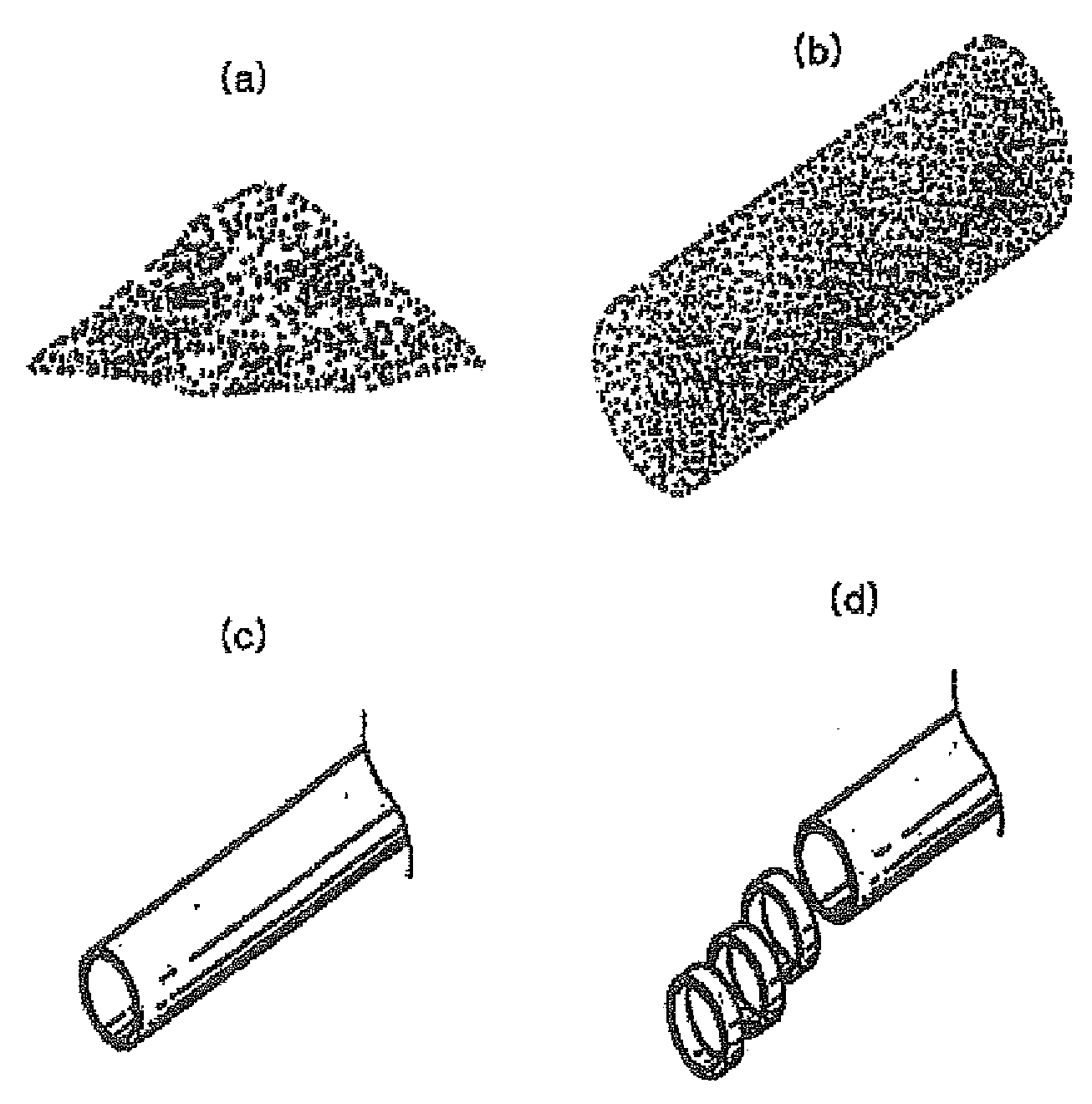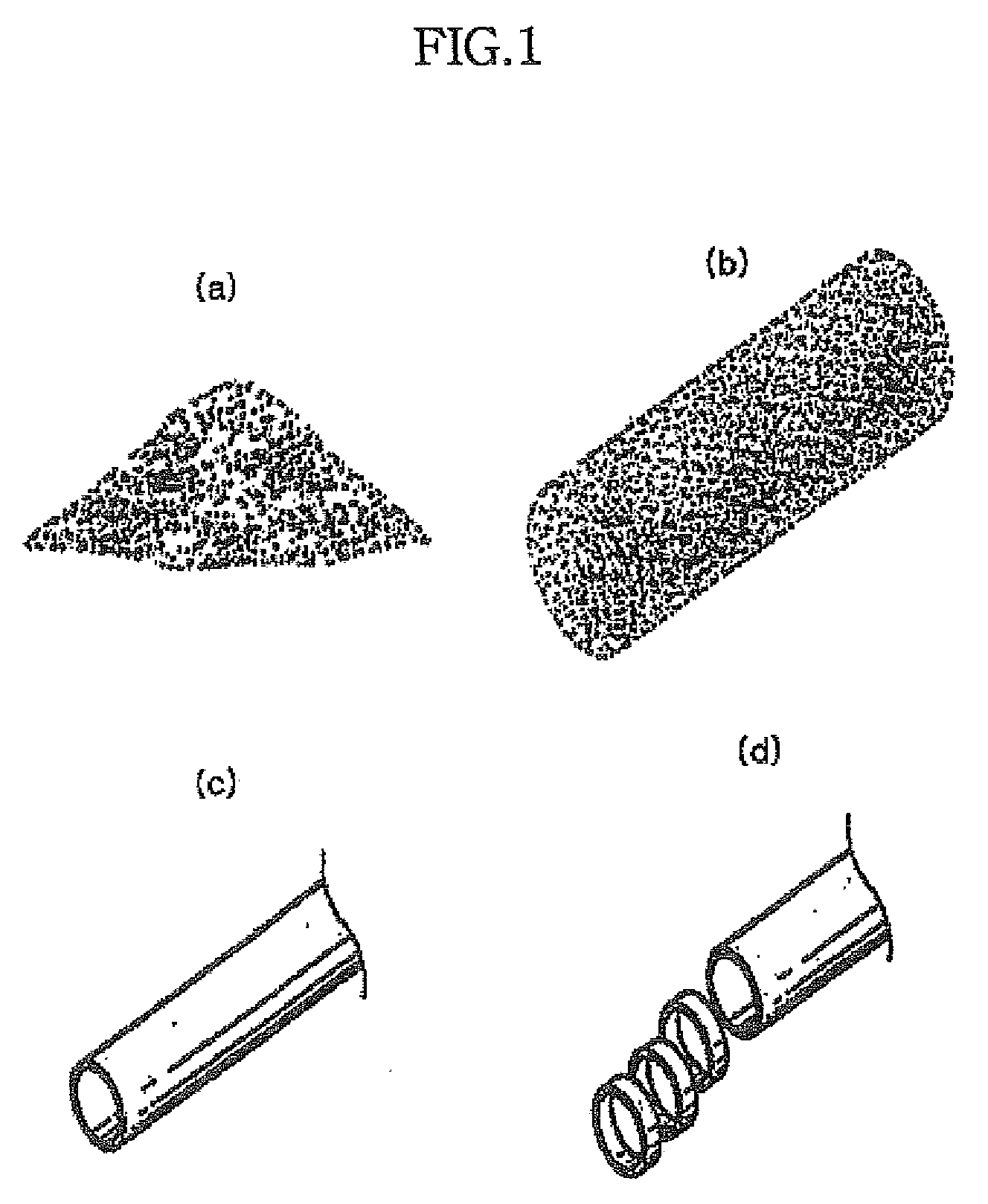Flux-containing brazing agent brazed at low temperature
a brazing agent and low temperature technology, applied in the field of brazing materials, can solve the problems of poor internal structure of metal members, difficulty in applying flux on desired portions of object metal members, and higher brazing costs, so as to improve the workability of the brazing process, simplify the brazing process, and improve the effect of brazing quality
- Summary
- Abstract
- Description
- Claims
- Application Information
AI Technical Summary
Benefits of technology
Problems solved by technology
Method used
Image
Examples
example 1
[0048]Alloy powder with a particle size of 30 meshes or less was prepared from a Zn—Al alloy, consisting of 78 wt % of Zn and 22 wt % of Al, using an atomizer, and 13 parts by weight of cesium fluoride-based flux, CsAlF4, was added to 100 parts by weight of alloy powder to produce mixed powder, including the alloy and flux powders uniformly mixed with each other (FIG. 1a).
[0049]In this respect, the melting points of the alloy and flux powders were 480° C. and 450° C., respectively.
[0050]Subsequently, the mixed powder, containing the alloy and flux powders, was charged into a cylindrical molding vessel and subjected to a powder forging process to form a billet with a diameter of 85 mm and a length of 300 mm as shown in FIG. 1b. Thereafter, the billet, which was preliminarily heated at about 200° C., was extruded into a pipe with an internal diameter of 8.2 mm and an external diameter of 11.2 mm using an extruder for forming pipes as shown in FIG. 1c. In such a case, since a temperatu...
example 2
[0052]Different metal pipes, that is, aluminum and copper pipes 1, 2 were brazed with each other using the brazing material according to example 1, as illustrated in FIG. 2. In this case, the copper and the aluminum pipes 1, 2 had the same external diameter and thickness, and each had an internal diameter of 8 mm and the thickness of 0.8 mm.
[0053]The copper pipe 1 was expanded at an end thereof, so that an expanded portion of the copper pipe 1 had a length of 9 mm and acted as a socket 1a to allow the aluminum pipe 2 to be plugged into the copper pipe 1.
[0054]After the aluminum pipe 2 was plugged into the socket 1a of the copper pipe 1 at an end thereof while the ring-shaped brazing material (B) according to example 1 being fitted around the end of the aluminum pipe 2, the aluminum pipe 2 and copper pipe 1 were located in an electric furnace while the aluminum pipe 2 being plugged into the socket 1a of the copper pipe 1, and heated at 520° C. for 5 min. In this case, nitrogen gas wa...
example 3
[0057]A brazing material, having the same composition as that of example 1, was produced according to the same procedure as example 1 except that a flux, containing CsAlF4 and a small amount of LiF mixed with each other, was used to improve an effect of the flux, and that a weight ratio of CsAlF4 and LiF was 10:1.
[0058]Li contained in the flux functioned to improve the spreadability of the brazing material during a brazing process, to prevent a brazed portion from being oxidized, to remove oxygen and sulfur from metals, and to improve thermal conductivity.
[0059]The brazing of pipes were conducted according to the same procedure as example 2, and pressure and tension tests for the brazed portion of the resulting pipe were carried out according to the same manner as example 2, leading to the desirable results like in example 2.
PUM
| Property | Measurement | Unit |
|---|---|---|
| temperature | aaaaa | aaaaa |
| melting points | aaaaa | aaaaa |
| melting points | aaaaa | aaaaa |
Abstract
Description
Claims
Application Information
 Login to View More
Login to View More - R&D
- Intellectual Property
- Life Sciences
- Materials
- Tech Scout
- Unparalleled Data Quality
- Higher Quality Content
- 60% Fewer Hallucinations
Browse by: Latest US Patents, China's latest patents, Technical Efficacy Thesaurus, Application Domain, Technology Topic, Popular Technical Reports.
© 2025 PatSnap. All rights reserved.Legal|Privacy policy|Modern Slavery Act Transparency Statement|Sitemap|About US| Contact US: help@patsnap.com



